
Privacy statement: Your privacy is very important to Us. Our company promises not to disclose your personal information to any external company with out your explicit permission.

If it is not Chai Wenyi's "under the dome", I guess I have been pressing this article. At this moment, I don't have to pay attention to the dispute about Chai Ayi. Her screaming for environmental protection has awakened me with some environmental protection. If I still press this article about improving energy conservation and environmental protection, it seems that I am somewhat numb!
The author has always wanted to write an analysis about the positive interaction between LED lighting and solar distributed systems. How can LED effectively reduce the cost of the owner's early system and increase the revenue, thus promoting the better development of solar energy distribution.
I will separately analyze the adoption of high-efficiency LEDs for solar LED lighting systems, solar LED street lights and fiery solar distributed roofs. Some of the superficial investment return table analysis in the text, I have tried my best to simplify, you have no patience to see, it does not matter As long as you pay attention to the author's summary and thinking.
We first analyze it from the small system of solar LED lighting. The picture is a series of fruit solar LED lamps designed by an "old master" in the author's photovoltaic circle.

Common core components of such luminaires:
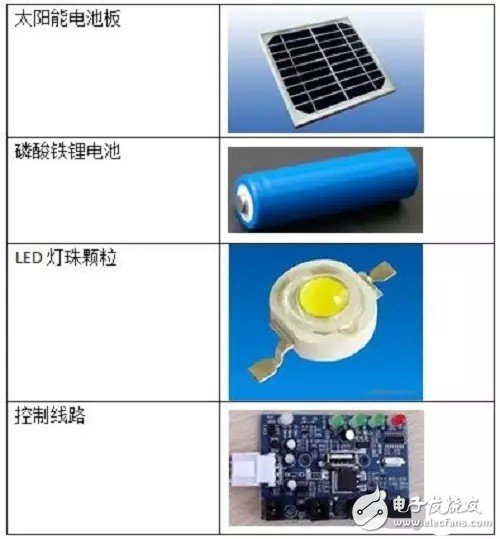
Lithium battery itself has a working voltage of DC3.7V, which is similar to LED lamp bead Vf. For the sake of understanding, we use LED lamp bead parallel to simplify calculation. The main purpose is to analyze the effect of high efficiency LED particle on system cost.
We simply use the relationship between light efficiency and current to define the drive current.

a) If low-efficiency LED particles are used, single current @300mA, Vf=3V, 100LPW, 5 LED beads are required to be connected in parallel; then the LED system power is calculated according to 5 watts, and the design work is 4 hours per day, and the power is continuously operated. For the night, the peak hours of sunshine are 5 hours, we can easily calculate:
System voltage 3.7V, working current: 5/3.7=1.35A;
Battery capacity 1.35*4*(3+1)=21.6Ah, taking into account the lithium battery discharge depth, take DC3.7V, 25Ah;
Solar panel power calculation: 1.35*4*1.2*6/5=7.8 watts; take 8 watts, DC6V, (considering system loss, solar panel capacity reserved 20%)
b) If high-efficiency LED particles are used, single current @300mA, Vf=3V, 140LPW, 4 LED beads are required to be connected in parallel, then the LED power is 4 watts, design work for 4 hours every day, and full power for 3 consecutive nights. The peak hours of sunshine are 5 hours. We can calculate the same as above:
Battery capacity DC3.7V, 20Ah;
Solar panel power 6.5 watts, DC6V;
So what kind of cost impact does it have?

This is why the old Master was bragging in front of the author to use a high-efficiency LED particle from a Japanese brand. Although the cost of LED increased, the overall system cost was greatly reduced.
With the above analysis, let us look at the impact of conventional solar LED street lights and LED street lighting system on solar energy systems.
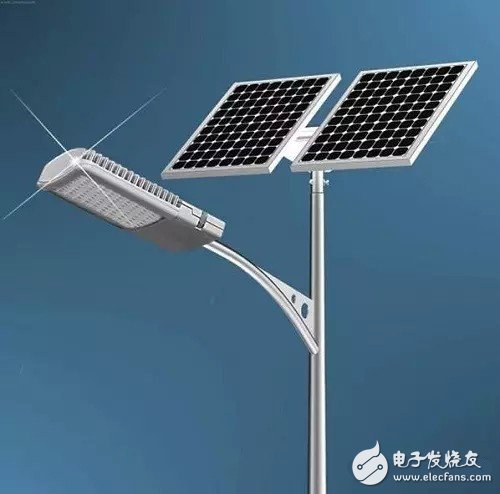
Solar street light core components:

The author's team is designing road lighting for a factory in Shanghai. The LED street light power is 30 watts, the system light efficiency is 100LPW, the system voltage is DC12V, the light pole is 6 meters high, the spacing is 10 meters, the road is installed on both sides, and the street lamp is fully powered at night. Hours, continuous battery life of 5 consecutive rainy days, according to the peak hours of sunshine 4 hours, roughly configured:
LED lamp head 30 watts;
System voltage 12V, working current: 30/12=2.5A;
Battery capacity 2.5*10*(5+1)/0.8=187.5Ah, consider the discharge depth of lead-acid battery, take DC12V, 200Ah;
Polycrystalline solar panel power calculation: 2.5 * 10 * 1.2 * 18 / 4 = 135 watts; solar panels take poly 135 watts, DC18V output;
So if we use a system light effect of only 85LPW lamp head, in the same light distribution, we can think that the LED system power is at least 35 watts. Then to achieve the same system autonomy requirements, the configuration needs to:
LED lamp head 35 watts;
Battery DC12V, 230Ah;
Monocrystalline solar module 160 watts, DC18V output;
The cost comparison is as follows:

Third, the positive interaction of LED lighting on distributed solar roofs
Finally, let's look at the hottest distributed solar roofs:
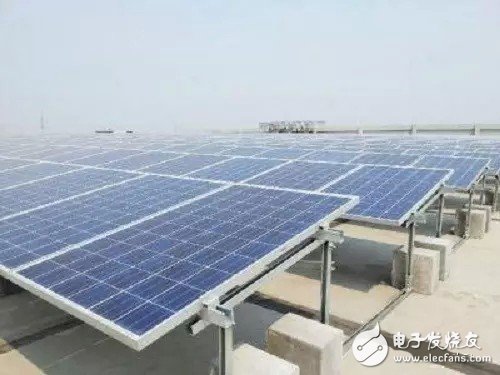
The basic structure of the system:
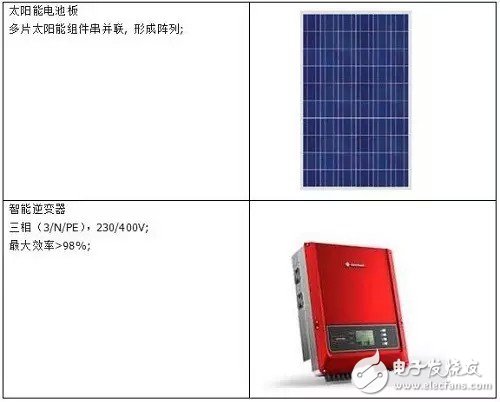
We perform simulation calculations in conjunction with a Shanghai-based printing plant roof-mounted solar solution currently in operation; it is assumed that the main workload of the plant is lighting and printing equipment. In this case, in order to facilitate the calculation, we use lighting power to account for 10% of the total power consumption of the plant.
Note: I originally referred to a ratio given by LED pioneer RolandHaitz: 20% of the world's electricity is used for lighting, but for the sake of simplicity, we take 10%. RolandHaitz, former CME of Agilent Technologies, has a Haitz law on the interaction between LED efficacy and cost: the decade, the cost of lumens by afactor of 10, the amount of light generated per LED packag eincreases by afactor of 20 for a given wavelength of light, in short, every 10 years, the cost per lumen of LED is reduced by 10 factors, and the luminous flux will rise by 20 factors. Personally feel that the current technological development may not be achieved in a decade.
Before the LED energy-saving retrofit, the original lamps were old metal halide lamps, 250 watts, 60 sets, and the total power was theoretically 15,000 watts (the actual power consumption is much higher than this value, one power supply itself, and the heat engine of such lamps) The huge power consumption in the process, here simplified to the ideal nominal power).
According to the above factors, it can be inferred that the total workload of the workshop workload is 150,000 watts, of which the total power of printing equipment and office equipment is 145,000 watts. We conduct field measurement and DIALux simulation calculation on the workshop, and 100 watt LED high bay light can reach The original lighting effect of 250 watt lamps. At this time, the total power of the LED lamps is 6000 watts.
1. Calculate solar panel installation design capacity
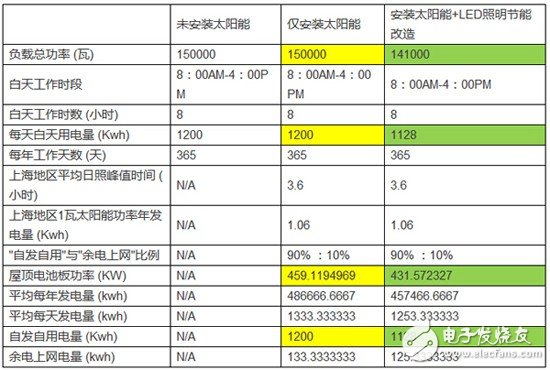
The amount of electricity generated by solar energy can sustain the load during the day.
Note: 1) In the actual calculation, we generally use professional design software, such as PVSys and RetScreen, to calculate, just as we use DIALuxevo to calculate lighting effects similarly;
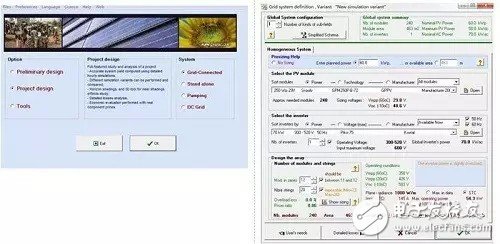
2) In order to simplify the understanding, we take 365 days of work; in practical applications, the weekend breaks, the load does not work, and almost 100% of the solar power generation is automatically online;
3) The design of the system capacity depends on the transformer capacity configured by the local power supply bureau. Generally, the 10KVA transformer supports 400KW solar installed capacity.
2. Calculate cash income
From the above calculations, we have come to "install solar only" and "install solar + LED lighting energy-saving retrofit", the solar design capacity in both cases, we simplify the design capacity as follows: 460Kw and 430Kw:
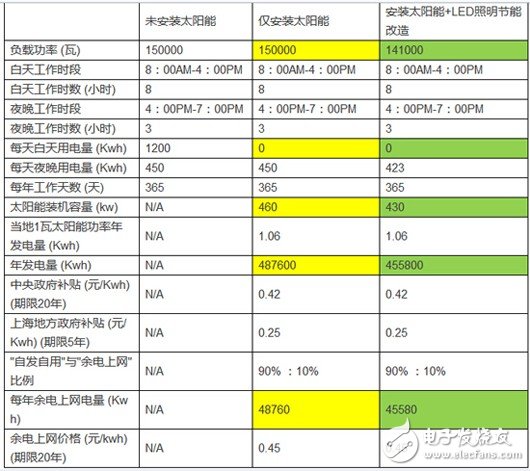
Because solar power enjoys central and local subsidies and surplus electricity income, then:
Cash income = (central + local subsidy unit price) * total solar power generation + surplus electricity income
For example, the first year of cash income = (0.42 + 0.25) * 487600 + 0.45 * 48760 = 348634; starting from the sixth year, including the sixth year, Shanghai local subsidies will no longer enjoy.
3. Comparison of comprehensive income
Set local city electricity price: 1 yuan / Kwh
1), the return on investment period is estimated
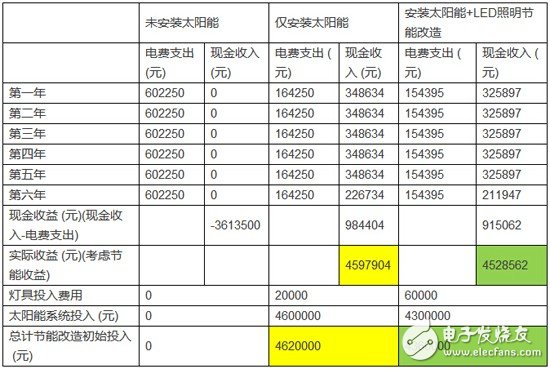
Obviously: the installation of LED and solar roof, 6 years back to the original and gains, and simply install solar panels, it takes 7 years to return.
2), the total investment report calculation
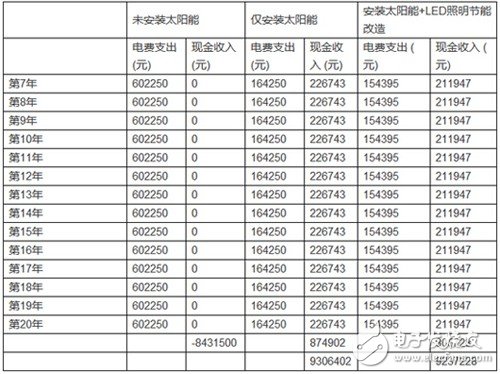
A combination of two tables can be seen:
a), simply install solar panels, the total benefit in 20 years: 13.9 million, the initial investment cost of 4.6 million, the life of the lamp in accordance with the three-year rotation cycle, 6 times, costing 120,000, equivalent to an initial investment cost of 4.72 million, Net income of 9.18 million, annual return rate of 9.7%;
b), LED + installation of solar panels, total efficiency in the past 20 years: 13.76 million, initial investment cost of 4.3 million, LED lamp life according to a five-year rotation cycle, 4 times, cost 240,000, equivalent to an initial investment cost of 4.54 million The net income is 9.22 million and the annual return rate is 10.2%.
Note: The above calculations only show the comparison of the revenues of the solar system after installing the LED and the solar system without the LED under the same conditions. We simplified some variables. In the actual calculation, we must consider the attenuation of the output power of the solar panel. Generally, we adopt 1.5% in the first year, and then we will follow the 0.7% decay rate every year. In addition, when investing in the calculation model, we must also consider the necessary financial costs and finance. Leverage tools are closer to real return on investment.
At the end, add a few additional sentences, welcome everyone to make a brick:
1, the above various types of calculations and analysis, in short: spend a small amount of money (LED lighting investment relative to the solar roof investment, a small share), do big things. If the solar energy is distributed with the energy-saving transformation of the workload, such as LED lighting applications, the return on investment is even more powerful;
2, LED lighting can play its easy dimming color, further reduce energy consumption, which can further reduce the solar design capacity;
3, the future of solar energy distributed households, indoor installation of various types of energy-saving appliances, including LED lamps, as well as energy storage facilities, there will be a HEMS (home energy management system) wireless network management of these load terminals, energy storage end and solar photovoltaic power generation end.
The function of LED lamps as energy-saving lighting may no longer be its selling point. Instead, LED lamps are used as a Node carrier of HEMS, a micro-network, collecting various kinds of information, communication between lamps and lamps, and between lamps and control centers. Communication.
For example, outdoor lighting fixtures can be integrated with a temperature meter to sense weather changes, and timely issue warning information to the control center. The control center automatically detects the capacity of the energy storage battery and determines whether the solar photovoltaic panel power generation preferentially charges the battery.
The same LED street light will become an excellent sensor integration platform and become a municipal management big data information collection platform. Further, in the context of decentralization, LED lighting will also play in the microgrid built by distributed clean energy. A dual role of energy saving and information ingestion transmission!
August 11, 2023
August 11, 2023
Mail an Lieferanten
August 11, 2023
August 11, 2023

Privacy statement: Your privacy is very important to Us. Our company promises not to disclose your personal information to any external company with out your explicit permission.

Fill in more information so that we can get in touch with you faster
Privacy statement: Your privacy is very important to Us. Our company promises not to disclose your personal information to any external company with out your explicit permission.